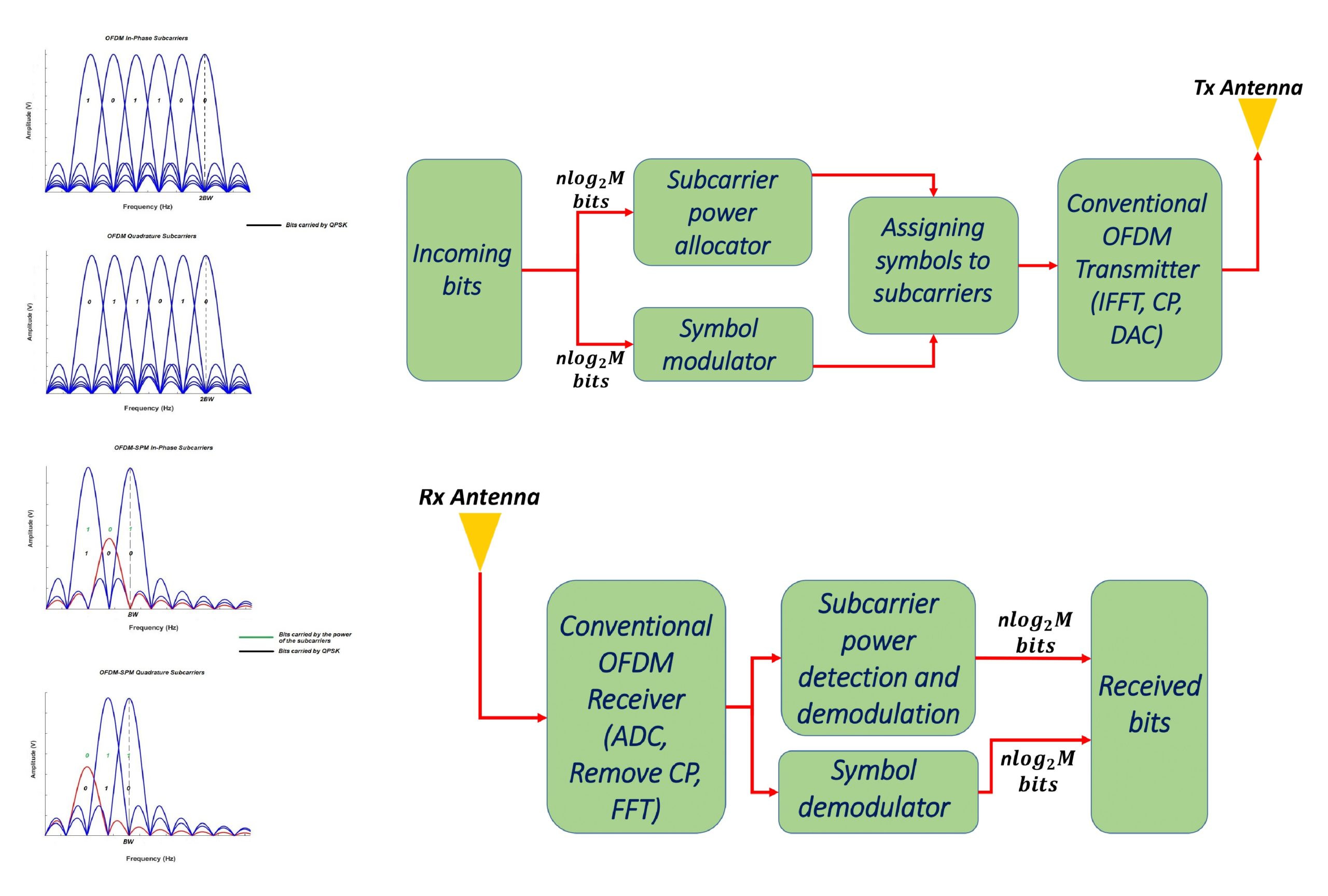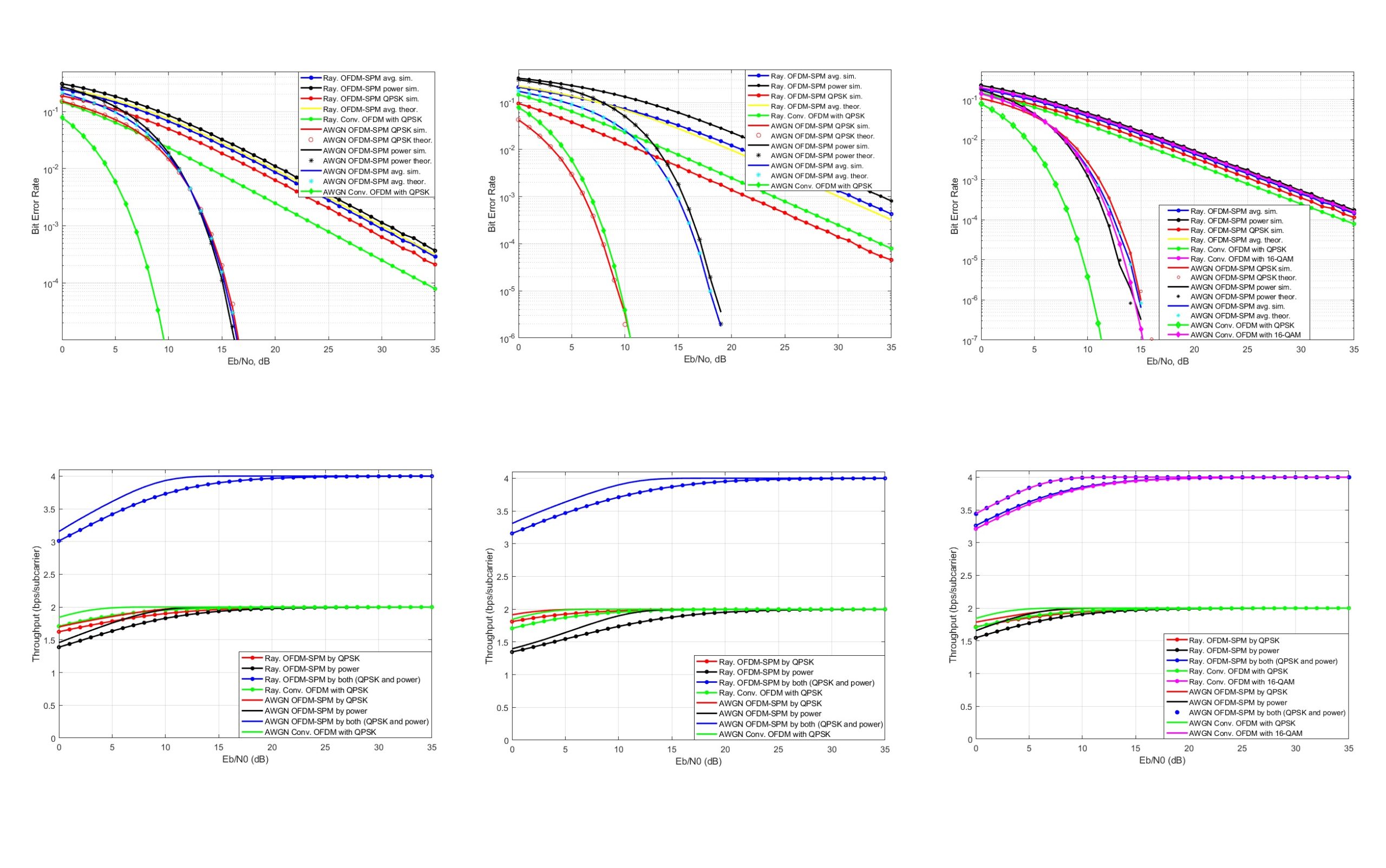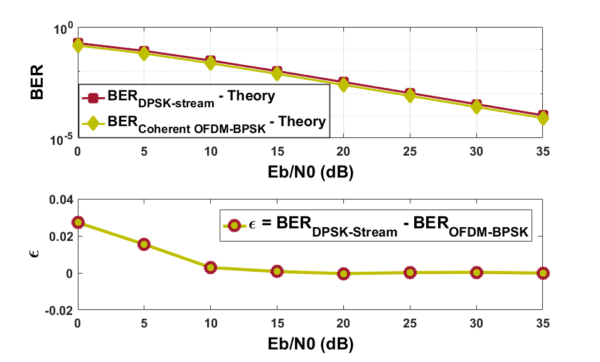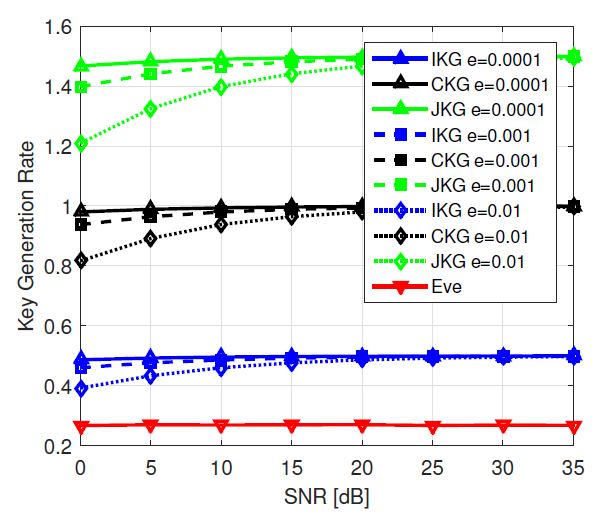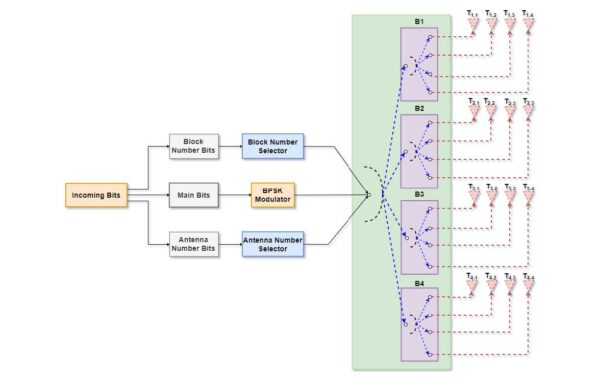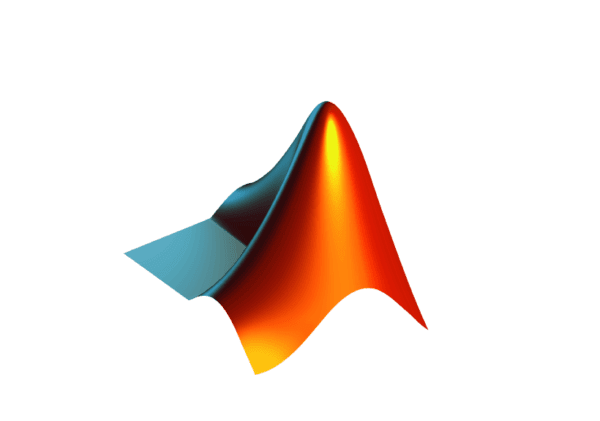Description
Simulation codes of OFDM-SPM with QPSK modulation for the paper titled “The Generalization of Orthogonal Frequency Division Multiplexing With Subcarrier Power Modulation to Quadrature Signal Constellations” https://rs-ojict.pubpub.org/pub/ofdm-spm/
Simulations of OFDM-SPM with QPSK modulation
OFDM-SPM-QAM Course link https://researcherstore.com/courses/crash-course-ofdm-spm/
Summary: A novel modulation technique termed orthogonal frequency division multiplexing with subcarrier power modulation (OFDM-SPM) has been proposed for achieving spectral-efficient data transmission in wireless communication systems. OFDM-SPM utilizes the power of each subcarrier in an OFDM block as an extra degree of freedom to convey extra information bits beside the bits transmitted by conventional signal modulation. OFDM-SPM has originally been introduced with binary phase-shift keying (BPSK) symbol modulation and was shown to provide great gains and various merits such as doubling the spectral efficiency, reducing transmission power and transmission times by half. Displaying its capabilities as a scheme to be adopted for future wireless communication systems, a question detrimental to the adoption of OFDM-SPM has yet to be answered. This is whether the gains that OFDM-SPM brings persist when paired with higher order modulation schemes, especially two dimensional signal constellation schemes such as M-ary PSK. In this paper, OFDM-SPM is paired with quadrature phase shift keying (QPSK) symbol modulation as an example of a higher order two dimensional modulation scheme. The performance analysis of this scheme along with its numerical simulations are carried out where the bit error rate (BER) and throughput performances of the scheme are given in both an additive white Gaussian noise (AWGN), and multipath Rayleigh fading channels. These simulations are done for different power allocation policies. Unlike other 3D modulation methods, the results show that OFDM-SPM can be used with higher order modulation schemes while maintaining all the gains exhibited in OFDM-SPM with BPSK. This gives OFDM-SPM a unique advantage when compared to other 3D modulation schemes such as OFDM-IM and OFDM-SNM, which lose the gain in spectral efficiency as the modulation order becomes higher. Furthermore, the results of OFDM-SPM with QPSK were compared to that of conventional OFDM with 16-QAM symbol modulation. OFDM-SPM displayed superiority both in terms of BER and throughput achieving a gain of approximately 2.5-3 dB. These findings clearly point out that OFDM-SPM is a promising modulation scheme, which should be investigated more vigorously and considered as a strong candidate for adoption in future 6G and beyond wireless communication systems.

